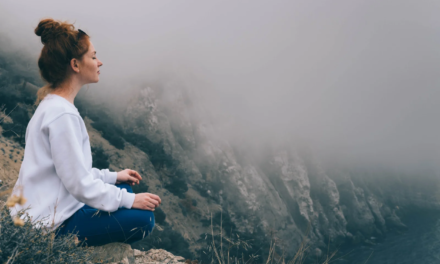On January 20, 2021, millions of people around the world learned the name Amanda Gorman when the brightly dressed twenty-two-year-old was introduced from the dais at Joe Biden’s and Kamala Harris’ inauguration. We watched her take a deep breath, walk resolutely to the lectern and deliver a spell-binding poem she had written for the occasion. “The Hill We Climb” is her anthem for our nation and her reading dazzled people across the world.
I was dazzled, too. As I read her poem again and again, her words touching my soul, shaken after the events of January 6th. I wondered at her amazing creativity. The next morning, I watched another of my favorite poets, Lyn-Manuel Miranda, praise her on Good Morning America with the words, “You crushed it!” and I laughed with her as she nearly fell off her chair.
Ms. Gorman’s display of creative prowess was more than clever entertainment. It showed that words can become a balm and the right delivery can be both comforting and energizing.
That thought has stayed with me. Is it just people like Amanda and Lin who are born with this creative spark or can the rest of us find it within us? Can we learn to be creative?
As usual, I turned to the internet for some research about creativity, where it comes from and how to stoke it. It turns out that neuroscientists, artists, engineers, musicians, architects and many others have tested theories about creativity for over a century. There is still much to learn, but some basic ideas have coalesced to form a basis for us lay people to build upon.
First, we must forget about the left brain/right brain construct. It turns out that creativity does not flow just from the right brain, but from all four hemispheres of the human brain. In fact, all four hemispheres must be involved. Yes, this is an idea that is hard to release because it is so widely accepted, but it has been thoroughly disproved by widely available neurological screening technology.
Second, in order to activate all four hemispheres, we must relax some of the control functions that are seated in the prefrontal cortex, according to researchers from University of California at Santa Barbara (2013). The prefrontal cortex is the part of the brain that is responsible for executive functions like planning and directing. In other words, we need to daydream and let our minds wander a bit to encourage creativity.
Another strategy for accessing the creative part of our brain is to exercise. This may seem a little far-fetched but if you think about it, I think you’ll see the wisdom in it. My grandfather always said that one of the most creative jobs he had to do on his farm was digging a ditch. It was mindless work with a physical component that allowed his mind to wander. Another smart guy, Albert Einstein said he thought of the theory of relativity while riding his bicycle!
So, how can we use these pearls of knowledge to set the stage for our own creativity? Here are a few things I recommend to my clients.
For Type A personalities, I suggest:
- Clarify the problem or challenge. Identify the desired end result.
- Do a little research. Learn about the challenge and fill your mind with the information you will need to find a creative answer.
- Give yourself a deadline.
- This is the step that is going to challenge you the most: take a break. Learn something new that is entirely different from the creative challenge you are working on. Exercise. Think about the challenge before you go to bed, but don’t worry about it.
- Trust that a creative solution will come to you. It will!
For Type B personalities:
- You are great at letting your mind wander. You will need to focus on clarifying the problem or challenge and identifying the desired end result.
- Do your research. Fill your mind with the information you will need. Do not skip this step!
- Give yourself a deadline. You might want to consider asking a colleague or friend to help you be accountable to the date you have set.
- You are likely to have a lot of creative ideas. Make sure to capture them in writing or on video, if that works better for you.
- Give yourself a day to prioritize your ideas on the basis of how well they solve the challenge.
Most of us may never become poets with the ability to move millions of people with our words. But I believe that most of us can creatively find solutions to problems or challenges, create something new that never existed before or identify a new way to apply an existing technology or solution to a different problem.
Not only are new creative approaches valuable, but they can also bring great joy and satisfaction to each of us. I can sure use more of these emotions in my life and I bet you can, too.













